
views
Performing Isolation Exercises
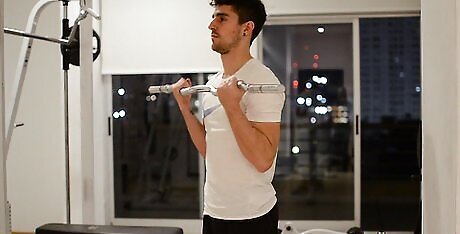
Do standing barbell curls. This is probably the best exercise for biceps. The standing barbell curl is what most people think of when they think big biceps. With the standard variation, you place your hands shoulder-width apart on the barbell, start with your elbows fully extended, and curl your arms upward to bring the barbell up to your chest. Keep your elbows fixed and back straight for proper form. This puts the maximum load onto the arms. Don’t lower the barbell quickly. Resist the weight as you slowly lower it to maximize the effectiveness of each rep. You can also do this exercise seated. The bar will come down to a rest at your thighs, which shrinks the range of motion to the area that pumps the greatest load on the biceps.
Do standing dumbbell curls. For standing dumbbell curls, you’ll assume the same stance as with a standing barbell curl, but the individual dumbbell in each hand allows you to work the arms either together or alternately. Generally speaking, you can lift more overall weight with a barbell, but you may find it easier to do more reps with dumbbells, especially when doing them alternately. One of the biggest benefits to standing dumbbell curls is the additional grip variation. You can do so-called hammer curls with dumbbells. A hammer curl is when you have your palms facing your sides throughout the range of motion instead of facing out and coming up to face toward you as with a barbell motion. Yet another variation you can do with the hammer curl during your standing dumbbell curls is to extend the range of motion by bringing the dumbbell up across your chest at a 45-degree angle instead of directly up at shoulder width.
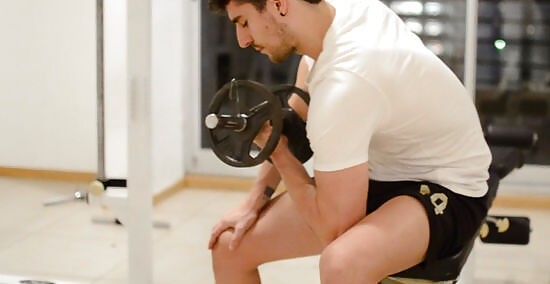
Do concentration curls. This curl isolates the whole biceps. Sit down on a chair or bench with a dumbbell in one of your hands. Lean forward slightly and place your triceps (back of the arm) on the inside of your thigh. Inhale as your lower, and exhale as your bring it up to your shoulder. Then switch to other arm. Ensure you avoid a swinging motion with your arm. Both the upward and downward movements should be slow and controlled to maximize the efficacy of each rep.
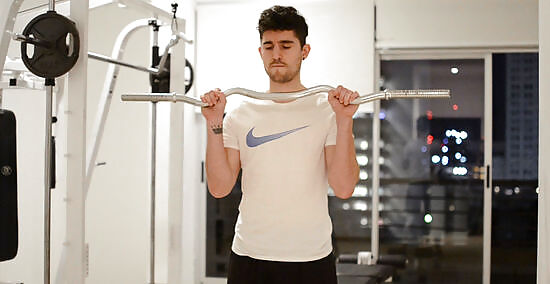
Do reverse curls. Start by holding a dumbbell in each hand with your palm facing behind you and the top of your hand facing forward. Bring the dumbbell up toward your shoulder. At the top of the lift, the back of your hands will face up and your knuckles will face out away from you. This is a great exercise for both biceps and forearms. At first, use a lower weight for your reverse curls than you do for your regular curls. You won't be able to lift as much weight during this exercise, at least not when you first start doing it. You can just as easily do this exercise with a barbell as well.

Do preacher curls. Preacher curls isolate the whole biceps. Start by taking a barbell or a pair of dumbbells and rest your arms on the preacher bench pad and press your chest against it. Curl the weight slowly, bringing it almost entirely to your shoulder before bringing it back down. When using dumbbells to do preacher curls, you can add more variation and work different parts of the bicep by taking advantage of a hammer grip with your palms facing to the side rather than up in the starting position.
Performing Compound Exercises
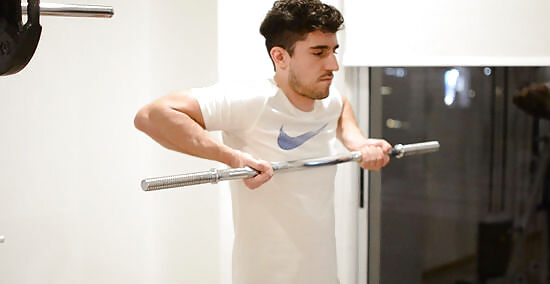
Do drag curls. In a standing barbell curl position, slide the bar upward against your body until it reaches your mid-chest level, which is about at high as you’ll be able to lift it while keeping the bar in contact with your torso. Then lower the bar the same way, making sure it does not lose contact with your torso. Your elbows will move backward and your shoulders cannot assist in the movement.
Do chin-ups. Chin ups work the back and biceps. To maximize the load on your biceps with each rep, start at a dead hang with your palms shoulder-width apart on the bar, and then lift past just your chin so that your upper chest comes in contact with the bar. The additional range of motion when lifting all the way to your chest increases the demand on your biceps. Though harder with chin-ups, lowering yourself slowly back down to a dead hang versus letting gravity pull you back down will increase the effectiveness of each rep.
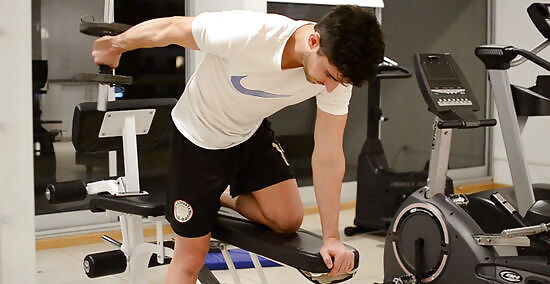
Do one-arm hammer rows. This exercise is essentially a dumbbell hammer curl from a row position. To perform, place your right knee on a flat bench with your left foot firmly on the ground to the side. Lean over so that your back is both straight and parallel to the floor. Then brace with your right hand against the bench. Lift the dumbbell with your left hand in the hammer position (with your palm facing toward your body). Initially let your arm hang straight down, and then simultaneously bring your arm up at the elbow as you also curl the dumbbell toward your pecs before lowering it again. Switch position to work the other arm. This position should allow you to lift more weight than with a standard hammer curl because you also place a lot of the demand on your upper back muscles.
Maximizing Biceps Definition
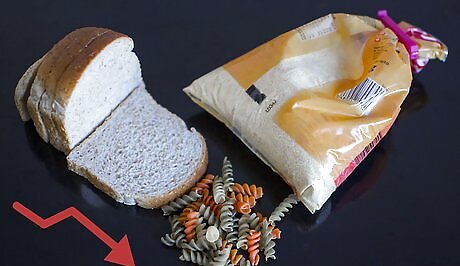
Reduce your intake of simple carbohydrates. In addition to building those strong biceps, you probably want to maximize the appearance and definition on them as well. Many of the steps you’ll take to maximize biceps definition will occur outside of the gym but in coordination with your biceps-building routine. Start by cutting simple carbs out of your diet. You should decrease carbs to roughly 30-40% of your daily caloric intake. Most of your carbs should be from vegetables, with about 20% from grains, fruit, and sugar.

Increase protein intake. If you want to build muscle while losing fat in order to maximize biceps definition, then you should really be upping your protein intake. Protein should make up about 20-30% of your daily caloric intake.

Keep the calories coming. One of the biggest mistakes people can make when looking to build muscle is to restrict calorie intake. No matter how hard you work those muscles, they’ll waste away if you don’t have the proper balance of caloric intake to help build the muscle fiber.

Focus on brachialis workouts. When it comes to creating a mountain-like peak on one’s biceps as opposed to a football-shaped curve, genetics plays a huge part; however, exercises that work the brachialis and brachioradialis can actually push biceps higher to give them a more mountain-like appearance. Many of the exercises that work these muscles have already been explained above, including hammer curls, reverse curls, and preacher curls. To maximize the effectiveness of these peak-building exercises, make sure you keep your elbows locked at your sides and your wrists straight during the repetitions.
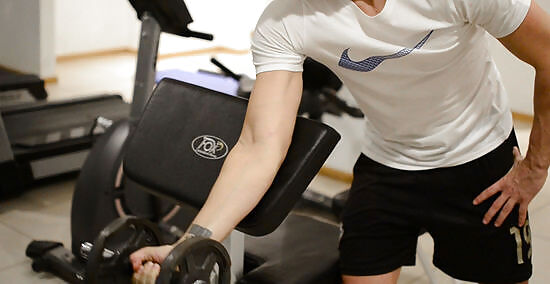
Extend the length of each rep fully. If biceps length—the length from your elbow to your shoulder—is what you want, then you want to focus on the beginning of each rep as opposed to the apex, which is what builds a biceps’ peak. Put extra effort into slowly raising the weight at the beginning of each rep and also slowly lowering the weight as your arms reach the bottom again. One of the best ways to build biceps length is to resist inertia as much as possible as you fully extend each rep.

Use a narrower grip. The long head of the biceps, which is the portion at the top of the biceps farther away from the body, can actually be worked harder than the short head of the biceps—or the lower portion closer to the arm. To specifically target the long head of your biceps, use a narrower grip with your hands only a few inches apart when doing barbell curls. If you strongly prefer using dumbbells, you can still target the long head of your biceps by curling across your chest at 45-degree angles—bringing the dumbbell up and across to the opposite shoulder—instead of simply bringing it up in a straight line.
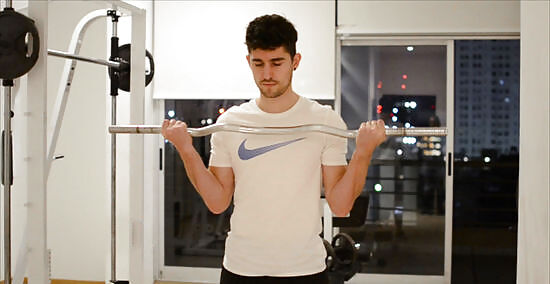
Use a wider grip. Using a wide barbell grip—even farther than shoulder-width especially—or curling dumbbells far away from the body will help you build the short head portion of the biceps. However, since even a standard shoulder-width grip works the short head of the biceps more than the long head, most people will start with this portion of the biceps already more developed than other portions.












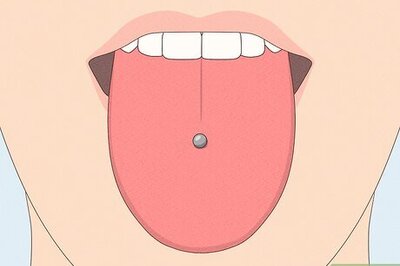
Comments
0 comment